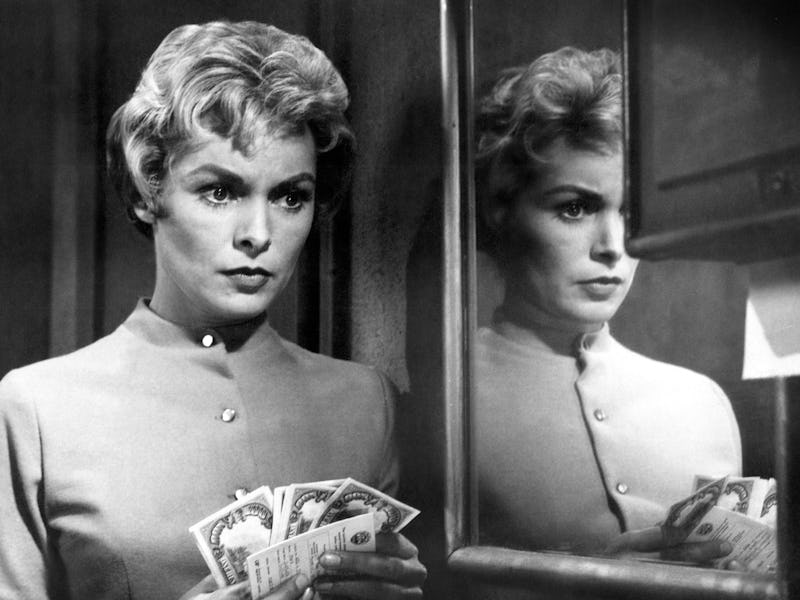Psycho Is Back on Netflix, and it’s Still a Stone-Cold Classic
Careful in the shower.

In 1959, Alfred Hitchcock appeared on BBC's famous radio program Desert Island Discs. He was planning, he said, a "psychological film" that was "in the nature of, shall we say, a rather gentle horror picture." That film was Psycho.
Like much of Hitchcock's work, Psycho experimented with the horror genre, playing with the creation of suspense and the intrigue of its characters' psychology. In many ways, it was his most revolutionary film, thanks to its ability to mold the horror genre into new forms. He may have considered it a "gentle horror," but we now know it as one of the greatest and most influential in history, and after its 1960 release it entered the pop culture lexicon. Its famously influential quick-cut shower scene alone is instantly recognizable as iconic in horror, while on a subtler level its themes, structure, and cinematic techniques transformed the genre.
The story is simple. Secretary Marion Cane (Janet Leigh) steals cash from her employer and anxiously sets off on the road. She winds up at the Bates Motel, where she meets owner Norman Bates (Anthony Perkins). Then a horrific event turns the story on its head, leading to a murder investigation.
We won't spoil the famous twist, because Hitchcock was passionate about giving people a spoiler-free viewing experience. One of the film's taglines was, "If you can't keep a secret, please stay away from people after you see Psycho." Another read, "After you see Psycho, don't give away the ending. It's the only one we have." Hitchcock also encouraged theaters to deny entry to late arrivals; the viewer, he believed, should experience the film from start to finish, allowing every twist and turn to come as a surprise. It was, at the time, an unusual marketing approach, and the director has since been credited with "inventing" the spoiler warning.
Hitchcock's hardline approach is a testament to how vital he considers suspense to be to Psycho, and to horror in general. In Psycho, he achieved new levels of suspense by understanding that we are most scared by the ordinary being confronted by the bizarre. "In the case of Psycho, it could happen next door," the film's star, Anthony Perkins, told Johnny Carson. "It's a very simple story. There are no extras, no special effects, no big budget, so it's very modest."
Sometimes all you need to be scary is a knife.
Psycho works because of, rather than despite, its unpresuming scale. Of course, there were horror films that put viewers on the edge of their seats before Psycho, but it revolutionized suspense in large part thanks to its inventive camera work and radical score by Bernard Herrmann. The creeping, eerie strings build as Hitchcock uses first-person camera angles from the killer's perspective to remind us that the victims are always being watched.
This combination of suspense and terrifying release has become a staple of the slasher genre, with pretty much every staple of the genre owing it some debt. It also has a legacy of its own, spawning two sequels, a prequel TV show, and a 1998 shot-for-shot remake by Gus van Sant. Despite an all-star cast, the experimental film flopped, with Roger Ebert noting, "Attending this new version, I felt oddly as if I were watching a provincial stock company doing the best it could without the Broadway cast." It was a reminder that filmmaking is far more than just a series of boxes to check.
Watching Psycho today, you can't help but feel it was ahead of its time. It's easy to see why so many filmmakers have paid homage to it, and why we can't seem to stop returning to Bates' eerie roadside motel. It's a smart, immaculately-made horror that's a must-see for any slasher fans or, indeed, any fans of cinema in general.
Psycho is streaming on Netflix.
This article was originally published on